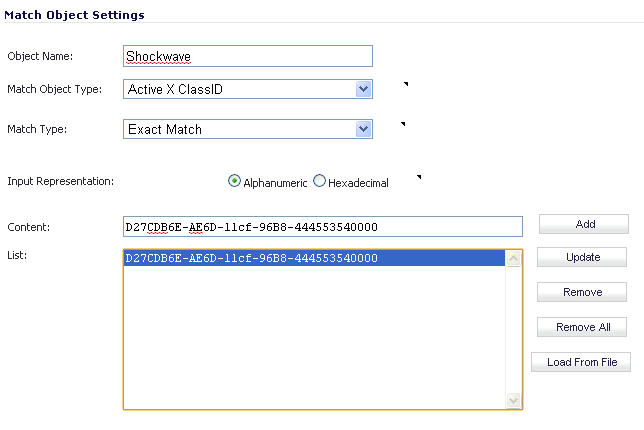
One of the most useful capabilities of Application Control is the ability to distinguish between different types of ActiveX or Flash network traffic. This allows you to block games while permitting Windows updates. Prior to Application Control, you could configure SonicOS to block ActiveX with Security Services > Content Filter, but this blocked all ActiveX controls, including your software updates.
Application Control achieves this distinction by scanning for the value of classid in the HTML source. Each type of ActiveX has its own class ID, and the class ID can change for different versions of the same application.
Some ActiveX types and their classid’s are shown in Table 65.